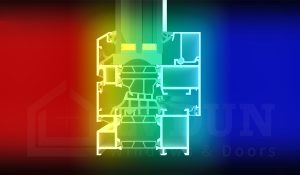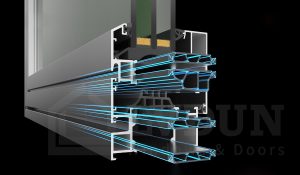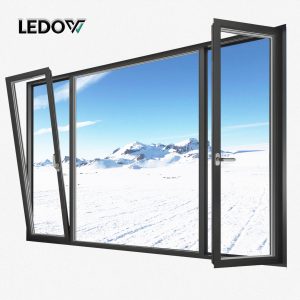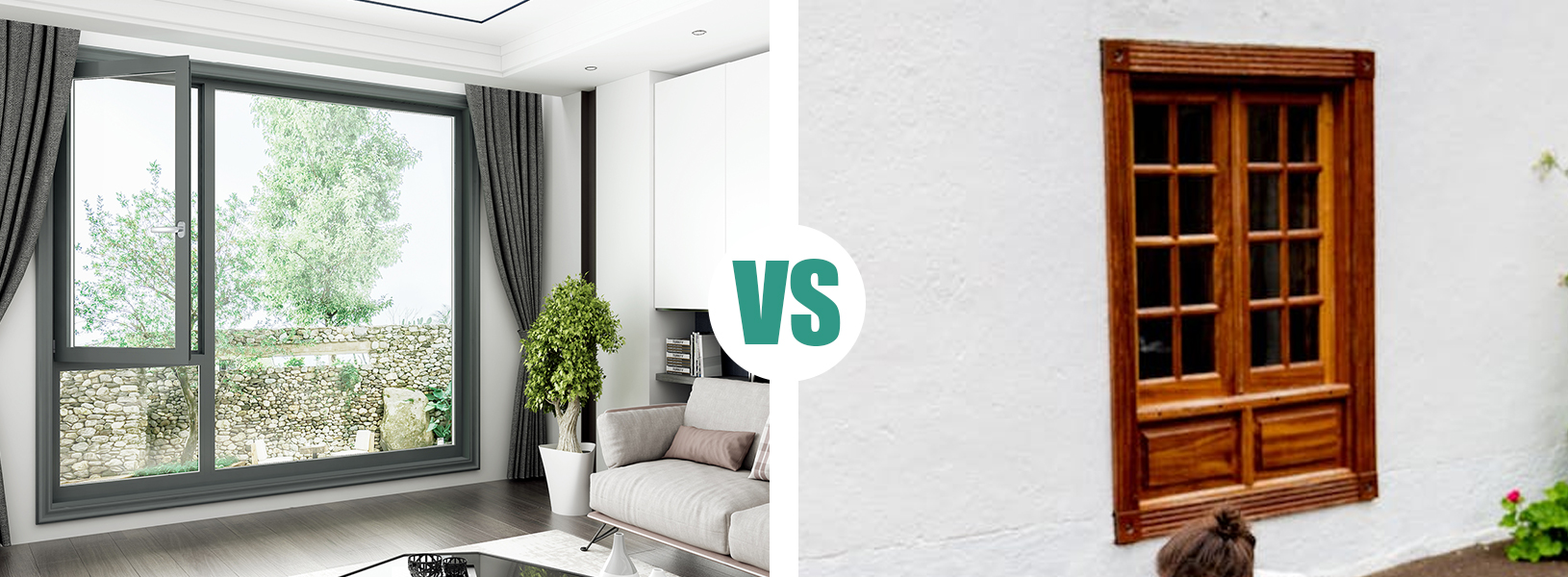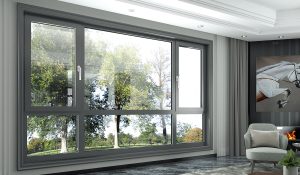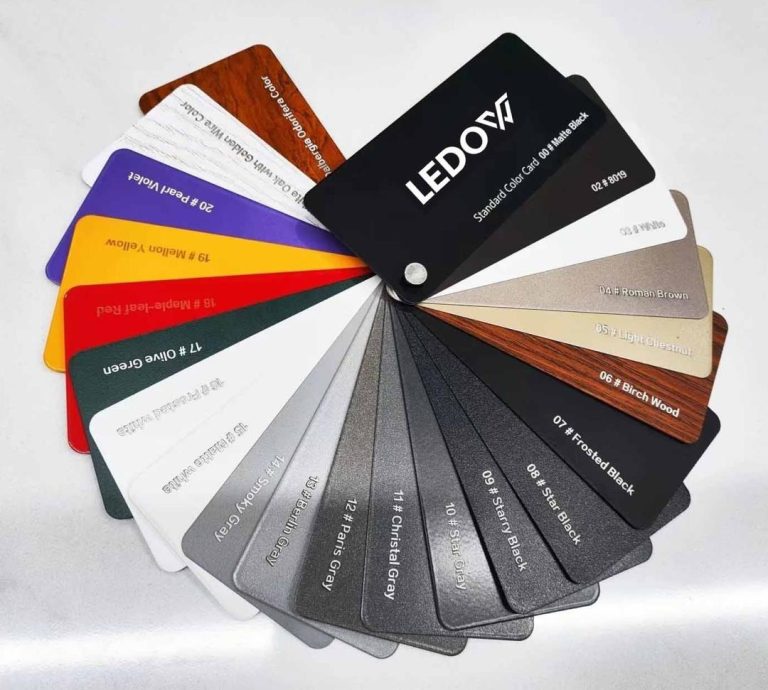When contemplating the selection of windows for your residence, the pivotal consideration revolves around energy efficiency. Opting for energy-efficient windows not only holds the potential to markedly curtail your energy expenditures but also ensures consistent home comfort throughout the year. In recent times, there has been a burgeoning interest in aluminium windows owing to their streamlined aesthetics and robust longevity. Yet, the pressing inquiry remains: do aluminium windows truly meet the criteria for energy efficiency? Let us delve deeper into this inquiry.
Energy Efficiency is important
Before delving into specifics, it is imperative to underscore the criticality of energy efficiency. According to findings from the Energy Saving Trust, a considerable 26% of heat dissipation from dwellings occurs through windows and doors. By integrating energy-efficient windows into your home infrastructure, you can effectively mitigate heat loss, diminish your carbon footprint, and, unequivocally, achieve substantial savings on your energy outlays.
The Composition and Characteristics of Aluminium Windows
Constructed from the resilient and lightweight metal known as aluminium, these windows are renowned for their durability, minimal upkeep requisites, and adaptability in design. Contemporary iterations of aluminium windows encompass an assortment of styles such as casement, sliding, sash, and tilt and turn.
The Energy Efficiency Profile of Aluminium Windows
Traditionally, aluminium windows endured criticism for their lackluster energy efficiency. However, advancements in technology, notably the advent of thermal break technology, have markedly bolstered their thermal performance.
Advantages of Energy-Efficient thermal break aluminium Aluminium Windows
Investing in energy-efficient aluminium windows boasting superior energy ratings proffers a plethora of benefits:
- Substantially Reduced Energy Bills: By curtailing heat exchange, these windows diminish dependency on heating and cooling systems, thereby translating into tangible reductions in utility expenses.
- Augmented Thermal Comfort: Consistent indoor temperatures are assured throughout varying seasons, ensuring warmth during winters and coolness amid summer’s swelter.
- Mitigated Condensation: The integration of low-emissivity (low-E) glass within energy-efficient models inhibits condensation by maintaining elevated temperatures on internal glass surfaces.
- Sound Abatement: The incorporation of double or triple glazing within energy-efficient aluminium windows serves as an effective barrier against external noise, thereby enhancing acoustic insulation within the domicile.
- Reinforced Security Measures: Aluminium’s inherent robustness is complemented by energy-efficient features that fortify home security, ensuring tranquility and safety.
- Enduring Durability: Withstanding inclement weather conditions without succumbing to warping, cracking, or fading, aluminium endures as a stalwart material choice. Energy-efficient aluminium windows, consequently, promise prolonged service life, marking a sustainable enhancement for home improvement initiatives.
- Environmental Advantages: By mitigating energy consumption, these windows contribute decisively to diminished carbon footprints. Opting for sustainable materials and practices paves the way for a more ecologically conscientious future.
- Aesthetic Versatility: Available in an array of hues and finishes, aluminium windows harmonize seamlessly with diverse architectural styles, enriching both interior and exterior visual appeal.
Drawbacks of Energy-Efficient thermal break aluminium Aluminium Windows
While thermal break aluminum windows offer numerous benefits, it’s essential to consider potential drawbacks:
- Initial Cost: Thermal break aluminum windows may have a higher upfront cost compared to standard aluminum windows. However, their long-term energy savings and durability often justify the initial investment.
- Installation Complexity: Installing thermal break aluminum windows may require professional expertise due to their specialized design and construction. Proper installation ensures optimal performance and energy efficiency.
Get an Thermal Break Aluminum Windows Quote For Your Home →
Energy Efficiency of Thermal Break Aluminum Windows
Now, let’s delve into the factors influencing the energy efficiency of thermal break aluminum windows:
Thermal Performance
Thermal break aluminum windows excel in thermal performance compared to traditional aluminum windows. The thermal barrier effectively reduces heat transfer through the frame, minimizing heat loss in winter and heat gain in summer. This results in more consistent indoor temperatures and reduced reliance on heating and cooling systems.
Insulation Properties
The thermal barrier in thermal break aluminum windows acts as a highly effective insulator, providing superior insulation compared to standard aluminum windows. This insulation helps create a thermal barrier that prevents outdoor temperatures from affecting indoor comfort, resulting in improved energy efficiency and lower utility costs.
Air Sealing
Properly installed thermal break aluminum windows offer excellent air sealing properties, minimizing drafts and air leakage. Tight seals and weatherstripping around the window perimeter prevent outdoor air infiltration, enhancing energy efficiency and indoor comfort. Additionally, multiple panes of glass and high-quality seals further contribute to air sealing and energy savings.
Maintenance and Durability
Thermal break aluminum windows require minimal maintenance and offer long-term durability, ensuring sustained energy efficiency over their lifespan. Routine cleaning and inspection of seals and weatherstripping help maintain optimal performance and energy efficiency. Their resistance to corrosion, moisture, and environmental elements ensures lasting energy savings and minimal maintenance requirements.
Comparative Analysis with Alternative Window Materials
To evaluate the energy efficiency benchmarks of thermal break aluminium windows, let’s juxtapose them with alternative materials:
Thermal Break Aluminium vs. Vinyl Windows
Vinyl windows are acknowledged for their affordability and commendable energy efficiency. Nonetheless, thermal break aluminium windows surpass them in durability and structural integrity. The thermal barrier within aluminium windows augments their insulation capabilities, rendering them superior in heat retention. Additionally, thermal break aluminium windows provide extensive design flexibility, accommodating diverse aesthetic preferences beyond the scope of vinyl windows.
Thermal Break Aluminium vs. Wood Windows
Wood windows exude timeless allure but demand greater maintenance in comparison to thermal break aluminium windows. While wood windows confer natural insulation benefits, thermal break aluminium windows surpass them in energy efficiency and robustness. Moreover, thermal break aluminium windows are impervious to rot, moisture, and insect incursion, positioning them as a low-maintenance alternative to wood.
Thermal Break Aluminium vs. Fiberglass Windows
Fiberglass windows epitomize high energy efficiency and durability, rivaling the advantages of thermal break aluminium windows. Nonetheless, thermal break aluminium windows present a more contemporary aesthetic and offer superior design adaptability. Both options deliver commendable energy efficiency and longevity, empowering homeowners to select based on individual preferences and financial considerations.
Enhancing Energy Efficiency of Thermal Break Aluminium Windows
To optimize the energy efficiency of thermal break aluminium windows, consider implementing the following strategies:
- High-Performance Glazing:Opt for double or triple glazing supplemented with low-emissivity coatings to fortify insulation and energy efficiency.
- Professional Installation: Engage proficient professionals to ensure precise installation, augmenting air sealing proficiency and thermal performance.
- Regular Maintenance:Routinely maintain seals, weatherstripping, and hardware to sustain energy efficiency and protract the service life of thermal break aluminium windows.
Conclusion
In summary, thermal break aluminium windows epitomize a compelling synthesis of energy efficiency, durability, and aesthetic versatility. Propelled by advanced insulation attributes and minimal upkeep exigencies, they emerge as a superlative choice for homeowners aspiring towards enduring energy savings and indoor comfort. By comprehending their attributes, benefits, and considerations, homeowners can make well-informed decisions aligned with their home enhancement goals and energy conservation imperatives. Embracing thermal break aluminium windows augurs enhanced energy efficiency, ensuring sustained comfort and operational excellence within residential environments.
We manufacture and sell Thermal Break Aluminum Windows because we believe they offer the most value of any material.
Start enjoying the benefits of LEDOW Thermal Break Aluminium Windows today.



